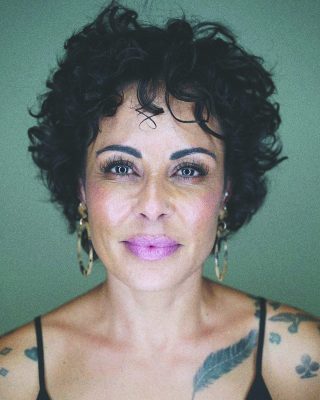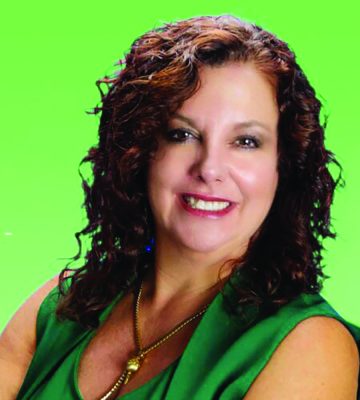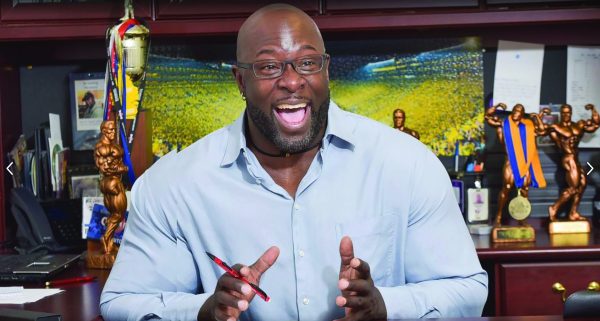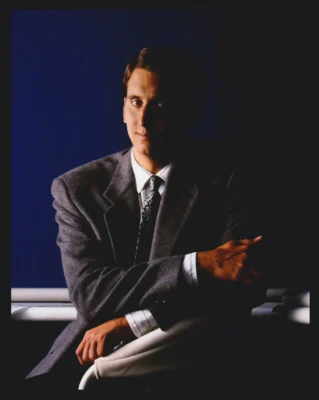By Amadeus Finlay
By its very nature, the tradeshow, convention and exhibit industry is international and cutting-edge. It’s led to the forefront by the clients it serves and by the purpose to show the world what’s coming next. To remain effective and truly representative of its global influence, therefore, the industry also needs to support, and be supported by, diverse ideas formed from broad cultural and demographic spectra.
In short, it needs to be itself … in order to be itself.
But with that comes a longstanding history of a white-dominated workforce, a demographic which today still accounts for 65.4% of all tradeshow industry personnel. Of the rest, 16.4% are Latinx, 9.4% are Black and just 0.3 % are Indigenous. While females outnumber their male counterparts at a significant 62.8% of the workforce, their presence at the top is limited at best. And if you are a non-white woman, that margin becomes even slimmer.

Rhiannon Andersen is the owner and CMO of Steelhead Productions in Las Vegas, Nevada. Andersen celebrates a rich multicultural heritage, coming from a Puerto Rican, Black and European family. But that diverse set of valuable perspectives sometimes faces a challenge to be heard.
“Any environment where you don’t see yourself reflected, poses insecurity,” explains Andersen. “I think that transcends from the professional and can be reflected in one’s personal life. Certainly, I am seen as an anomaly among my peers doing what I do as a female and a minority. I am different from the stereotypical tradeshow company owner.”
“I truly never felt discrimination intentionally,” Andersen continues, “but when people see me, they might not be used to how I look. At our industry conference, a gentleman came into the environment and asked me if he could speak with the owner. When I told him he was speaking with the owner, the gentleman seemed unable to process this. And it’s not being looked down upon, it’s being different—and that has been a transition for some to get used to, especially when we are in C-Suite.”
But for Andersen, the good more than certainly outweighs the bad, and with the development of focus groups and networking opportunities for minority players in the industry, Andersen points to a strong foundation that will lead to an even stronger future.
“In particular, Women in Exhibitions has put an emphasis on women who want the support of other women in working to evolve the tradeshow industry. They do some incredible work,” she explains
Women in Exhibitions is no stranger to the international tradeshow and convention scene. Launched in the Netherlands in 2018, this professional development and mentoring network has since spread to Germany, the UK and Dubai, to name but a few, bringing a diverse international perspective into one central thinktank.

Stephanie Selesnick is the secretary and international liaison for the North America chapter of Women in Exhibitions. A second-generation daughter of the tradeshow industry, the younger Selesnick followed in the trailblazing footsteps of her mother, Denyse, and today is an industry heavyweight in her own right. She runs operations as president of International Trade Information, Inc. in Las Vegas.
“The reason we started the North American chapter,” explains Selesnick, “was to uplift and empower women. We are now at 115 members, including four corporates, but we are doing a major drive over the next couple of months.”
“This year marks the first time that the board of the Society of Independent Show Organizers is made up of a majority of women,” she continues, “and that’s certainly encouraging. It’s an industry in transition, and I think it also is due to change in the world.”
The data is with Selesnick. Informa, the largest tradeshow company on the planet, has women at the highest levels, and two of their largest divisions are female-operated: Asia, by Margaret Ma-Connolly, and North America, by Nancy Walsh.

Women are in the representative ascendancy, and they are increasingly occupying positions of power. But what of non-white males and their journey to the top? Melvin Alston is the Las Vegas Market City Manager at Nth Degree, and is one of the few out there who fits the description. A family-man body builder, this larger-than-life character has become one of the legends of the national circuit. However, Alston’s rise to the top was not as smooth and equitable as it could have been.
“I am patently aware that I am a Black man,” Alston explains. “It is always in my mind in everything I do. Not that I want to have to think that way, but it is the truth.”
“The industry has largely been supportive of me,” he continues, “but I am also one of maybe only a few Black people in a management position in the business.”
“There was one occasion when I was working a job, over a couple of days, when on the second day the manager took me aside and said he was taking me off it. Not that I had done a bad job, but because the client had used the N-word and it was thought best to take me out of the picture.”
“Has it changed?” echoes Alston to the question posed. “Certainly the industry has, representation in management aside, but living in this country is another thing. It is much worse now than it was in the ‘70s, ’80s, ‘90s. I have grown Black children, I have Black friends, I have a Black family. The misconceptions and prejudices that are being stoked make me fearful for their safety.”
As Alston pointedly highlights, society bleeds into industry, and the impact of the outside is often reflected within. With that in mind, analysis of representation, in any context, must also go to the roots of the subject to present a truly accurate picture.
In North America, Indigenous peoples gather for their own social and political conferences all across Turtle Island, the name Indigenous people use for North America, but their presence is also felt in the Western event and tradeshow industry.
Danielle Her Many Horses, Oglala Lakota, is the deputy executive director of the National Indian Gaming Association. Among her responsibilities is direction of the Indian Gaming Tradeshow & Convention, an annual gathering of Indigenous gaming owners and associated non-tribal partners, which is entering its 35th year.
Given its uniqueness in the industry, the Indian Gaming Tradeshow & Convention has established itself not only as the premier event for the Indian gaming industry but, in the words of Her Many Horses, “as the figurative heartbeat of Native American success.”
“It is the largest gathering of tribal leaders and casino executives in the country,” continues Her Many Horses, “and the Indian Gaming Tradeshow & Convention is both the meeting place where the community gathers to learn, network and exchange industry-specific ideas and a cultural celebration of success, strength and self-reliance.”
“We anticipate over 8,000 attendees this year. Attendance has steadily grown in both attendees and vendors. This tradeshow is unique in that it is specifically geared toward the tribal gaming industry as both buyers and sellers in the market. The growth of Indian gaming as an industry and market increased Indigenous representation in the world of tradeshows, as well.”
The industry may be slightly in the shadows of where it needs to be, but with individuals such as Andersen, Alston, Her Many Horses, and Selesnick leading the way and showing the potential for the next generation, there is every chance that we will see our mission truly reflected in the work that we perform.
As Andersen so beautifully put it:
“Own your authenticity. I have been on both sides of the fence, trying to mold the status quo. But as I grew professionally, I began showing up as myself, and it was then that my career trajectory really began to shift. Embrace that you are actually bringing something to the table.”
This story originally appeared in the Q2 2022 issue of Exhibit City News, p. 40. For original layout, visit https://issuu.com/exhibitcitynews/docs/ecn_Q2_2022






























